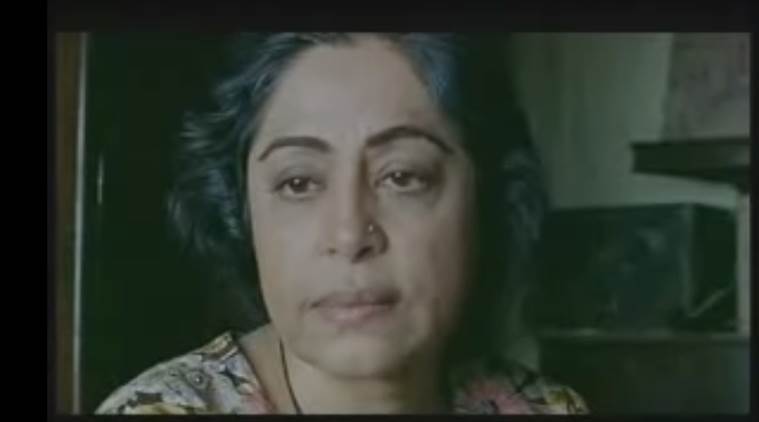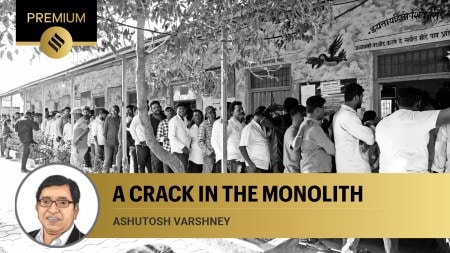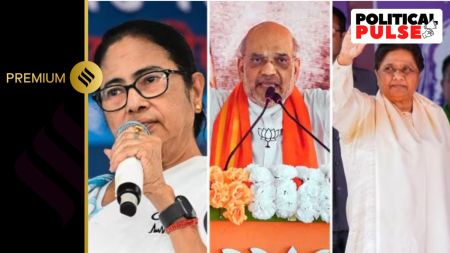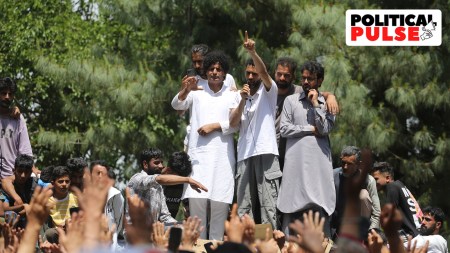- India
- International
Khamosh Pani: The well as a silent symbol of the pain of Partition
Women, hailed as a symbol of chastity and biological reproducers, stood at the heart of the brutality of violence that Partition entailed, with men wrestling their power and domination through and on them.
 A still from Khamosh Pani. (Source: UniFrance/Youtube)
A still from Khamosh Pani. (Source: UniFrance/Youtube)
The generally amicable Ayesha refuses to go to the well to draw water with other women. When asked for the reason of her reluctance, she turns her face away: not just evading the question, but unwilling to confront it. Later, Ayesha visits the well twice. She meets her brother there, stating she will not go back to India with him to visit their ailing father. After a few days she goes to drown herself: the act reiterative of a macabre incident from the past, but differing in its conclusion. Caught amidst the atrocities of Partition, Vero (Ayesha’s name before conversion) had refused to accede to her father’s orders (or desperate pleas) to jump. She had stood on the edge of the well and declared she would not do it. In 1979, with a changed name and identity and with no one to force her, Ayesha brings the act to a fatal completion.
The horrific act of women jumping into a well to safeguard their honour and dignity, captured with an otherwise missing context in Sabiha Sumar’s 2003 film Khamosh Pani, was not an anomaly, rather a common, crude practice during Partition. On August 15, 1947, as India was celebrating Independence, the subcontinent was simultaneously being torn apart into two new countries along lines that were both fluid and opaque. “Few had foreseen that this division of territories and power would be accompanied by anything like the bloodbath that actually happened. The character of the violence — the killing, rape and arson — that followed was also unprecedented, both in scale and method,” historian Gyanendra Pandey writes in his book, Remembering Partition.
Women, hailed as a symbol of chastity and biological reproducers, stood at the heart of this brutality, with men wrestling their power and domination through and on them. Their ability to save women reaffirmed their role as the protector; failure to do the same emasculated them. They were instances of abduction, forcible conversion as well as unspeakable crimes perpetrated on them. Killing themselves then became a way out to escape this ignominy, and many women either chose this option or the choice was made for them. The well — an essentially domestic fixture and in many parts of the country a place for a congregation — assumed heightened importance in these times. It became a symbol of both deliverance and salvation: rescuing women from shame and preserving their honour.
“In retrospect, the well has a certain significance, meaning for the women,” says Sucheta Mahajan, professor of Modern History at Jawaharlal Nehru University. “Women were not armed, and mass hanging was difficult. Almost every household in Northern India had a well. It was accessible,” she concludes.
Urvashi Butalia in her book, The Other Side of Silence records the ghastly incident at Thoa Khalsa, a small village in Pakistan where the elders, consisting men and women, decided to kill their women rather than let them be prey “to the possibility of sexual violence, abduction and inevitably impregnation of men of other religion”. What followed was 80 or 90 women jumping into the well and taking their lives. But Butalia’s recounting of the incident, told to her by one of the women who had attempted to jump but had survived as the “well had filled up”, opens an interesting segue. “Her account, her memories of this moment were conflicted shot through with the relief of being alive but the guilt of having somehow escaped an ‘honourable’ death,”. The latter’s admission of feeling relief, albeit laced with guilt, is suggestive of how the well — apart from providing an escape for some— also witnessed someone’s relief of being alive, and her consequent shame. Ideology, as Mahajan says, “works only so far”.

The history of Partition, Pandey writes in his book, has treated violence more as an “illegitimate outbreak”, rather than as a compliant effect of it. “Given the specificities of subcontinental history, however, the ideological function of ‘partition’ historiography has been very different, say, from that of Holocaust literature…It has been aimed rather at justifying, or eliding, what is seen in the main as being an illegitimate outbreak of violence, and at making a case about how this goes against the fundamentals of Indian (or Pakistani) tradition and history: how it is, to that extent, not our history at all.”
In the case of the silent women, locating, identifying and narativising their history becomes a bigger ordeal. Every act of violence committed on them — forceful conversion, remarriage, rape, death — served as an erasure of their self. In her book, which falls back on the memory and oral history to foreground these voices, Butalia deals with this extensively. At the same time, she alerts us of a parallel narrative where the creation of a new state, opening up of new and different opportunities and the rehabilitation of the women by the State provided them with a new reality, even opportunities. The question, however remains, at what cost. She measures that too.
The writer admits of a permanent, unfillable void created not by just a lapse of memory but by the inability of the women to articulate and share what they experienced. “Even if the women wanted to remember, what would they remember? With whom would they remember? In order to be meaningful, memories have to be shared but if you are alone if that memory is shameful if there is no one to allow it to legitimate, how do you remember?” Placed in this context, one can perhaps evaluate the significance of the presence of the well more accurately. It not just then witnesses the “shame”, in some ways, the well also becomes a repository of that unaccounted, individual history, an unassuming recorder of events from singular subject positions.
The common tendency to view women as symbolic beings — to assimilate their varied experiences and histories under different sub-headings — tends to restrict their identities, their idea of self. Theorist Cynthia Enloe observes, women, in times of crisis, are “either an icon to be defended or a spoil of war to be denigrated”. In Khamosh Pani — a searing account of a Hindu woman in Pakistan, trying to stitch together her life rendered into smithereens by the Partition — Ayesha’s initial refusal to drown is, by extension, her refusal to be a symbol. “Ayesha’s story is the story of a woman who constantly asserts the desire to be herself in the face of a cultural imperative imposed on women to be symbolic beings. Women are often held up as symbols of the honour of their communities, nationalities and cultures,” says Paromita Vohra, who has written the screenplay of Khamosh Pani. Ayesha rejects being viewed as a “spoil of war”, or an icon, a martyr or a victim. She strives to be, as Vohra says, herself. This is highlighted in her meeting with her brother near the well. “I have made my own life without you. Now this is my life and this is my home,” she says before deciding against going with him.
The well and the water give Vero a new lease of life, enable her to reconstitute her individual self as Ayesha, and later, with her individual identity rejected by her close friend — which “finally fills her with despair and drowns her personhood, so to speak,” Vohra says — it is the place she goes, to kill herself. “The well and its ‘khamosh pani’ in that symbolic sense hold the stories of many women who may have made varied choices – or been unable to make them,” Vohra shares. In her resistance and her eventual decision to take her own life, Ayesha keeps the reign of her fate in her own hands, as the well remains the sole onlooker withholding her story.
More Lifestyle
May 20: Latest News
- 01
- 02
- 03
- 04
- 05


































